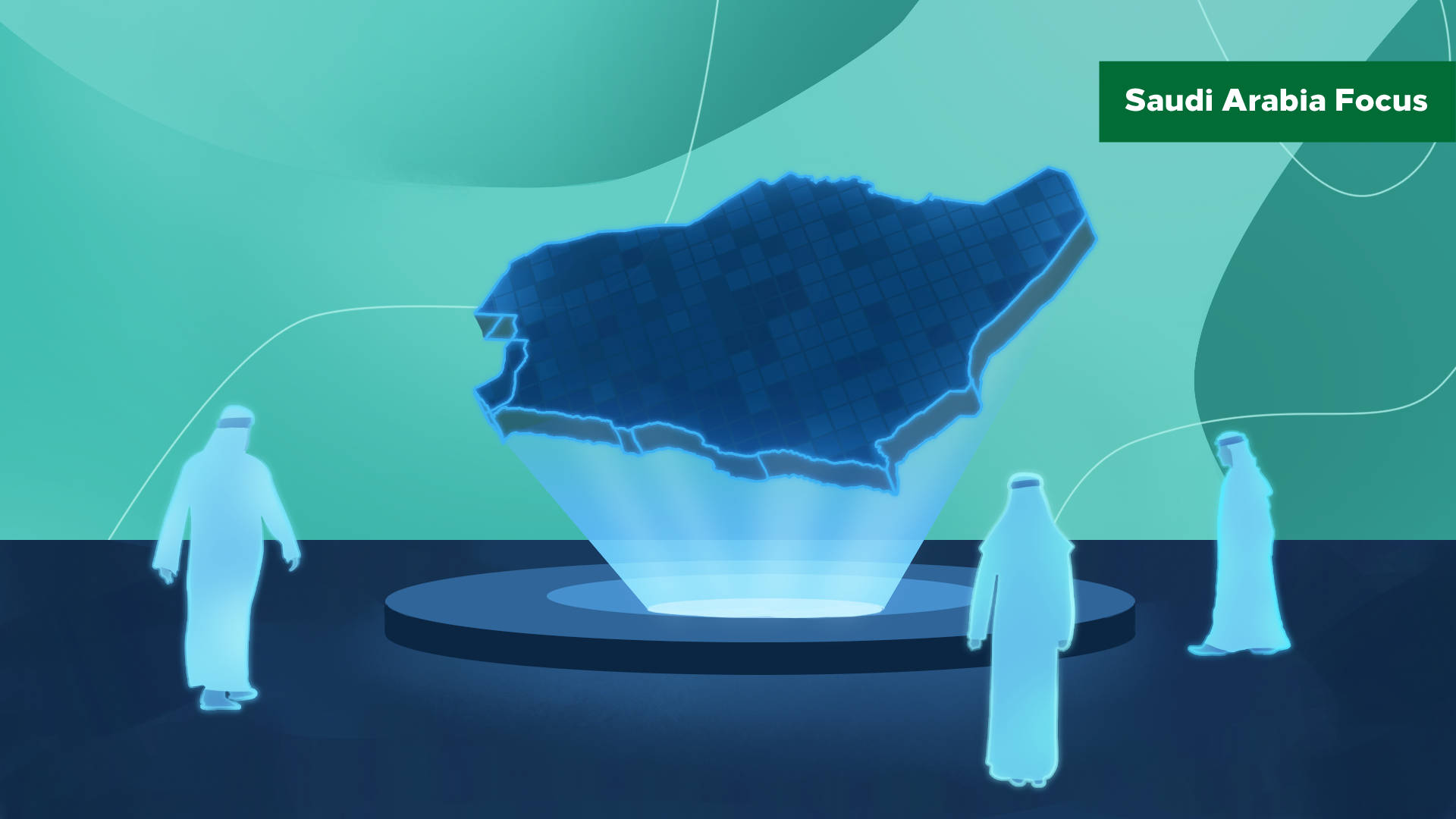- Arbitration
- Banking & Finance
- Capital Markets
- Commercial
- Competition
- Construction & Infrastructure
- Corporate / Mergers & Acquisitions
- Corporate Services
- Corporate Structuring
- Digital & Data
- Dispute Resolution
- Employment & Incentives
- Family Business & Private Wealth
- Innovation, Patents & Industrial Property (3IP)
- Insurance
Find a Lawyer
Book an appointment with us, or search the directory to find the right lawyer for you directly through the app.
Find out more
Level Up: Unlocking Financial Potential In The Middle East
Welcome to this edition of Law Update, where we focus on the ever-evolving landscape of financial services regulation across the region. As the financial markets in the region continue to grow and diversify, this issue provides timely insights into the key regulatory developments shaping banking, investment, insolvency, and emerging technologies.


2025 is set to be a game-changer for the MENA region, with legal and regulatory shifts from 2024 continuing to reshape its economic landscape. Saudi Arabia, the UAE, Egypt, Iraq, Qatar, and Bahrain are all implementing groundbreaking reforms in sustainable financing, investment laws, labor regulations, and dispute resolution. As the region positions itself for deeper global integration, businesses must adapt to a rapidly evolving legal environment.
Our Eyes on 2025 publication provides essential insights and practical guidance on the key legal updates shaping the year ahead—equipping you with the knowledge to stay ahead in this dynamic market.
The leading law firm in the Middle East & North Africa region.
A complete spectrum of legal services across jurisdictions in the Middle East & North Africa.
-
Practices
- All Practices
- Banking & Finance
- Capital Markets
- Commercial
- Competition
- Construction & Infrastructure
- Corporate / Mergers & Acquisitions
- Corporate Services
- Corporate Structuring
-
Sectors
-
Country Groups
-
Client Solutions
Today's news and tomorrow's trends from around the region.
17 offices across the Middle East & North Africa.
Our Services
 Back
Back
-
Practices
- All Practices
- Banking & Finance
- Capital Markets
- Commercial
- Competition
- Construction & Infrastructure
- Corporate / Mergers & Acquisitions
- Corporate Services
- Corporate Structuring
- Digital & Data
- Dispute Resolution
- Employment & Incentives
- Family Business & Private Wealth
- Innovation, Patents & Industrial Property (3IP)
- Insurance
- Intellectual Property
- Legislative Drafting
- Private Client Services
- Private Equity
- Private Notary
- Projects
- Real Estate
- Regulatory
- Tax
- Turnaround, Restructuring & Insolvency
- White Collar Crime & Investigations
-
Sectors
-
Country Groups
-
Client Solutions

- Law Firm
- /
- Insights
- /
- Law Update
- /
- Saudi Arabia: Transformation of the Kingdom
- /
- 3D Trademarks assessment, a Saudi perspective
3D Trademarks assessment, a Saudi perspective
Manel Ben Said - Senior Associate - Intellectual Property
Muhammad Hammodeh Ali
What is it?
Three-dimensional trademarks or more commonly 3D trademarks fall into the non-conventional set of marks. Non-conventional trademarks, also known as non-traditional trademarks, comprise visible marks (e.g. holograms, colors, shapes, positions), or non-visible marks (e.g. sounds, textures, tastes, scents). You identify a product or service from a particular company by their trademark. In some cases, the unique shape or product package can be registered as a 3D trademark. 3D trademarks do protect 3D shapes of goods or their packaging. Application for a 3D trademark should be assessed according to various factors, including its inherent distinctiveness or its acquired distinctiveness.
Meaning that it is in fact the unique shape of a product or its packaging that is highly recognizable by the consumers that makes it worthy or registration. Examples of some of the most famous 3D trademarks include the packaging of the Toblerone chocolate bar, and the famous Coca Cola bottle, whose owners have successfully obtained protection for their product’s shape or packaging due to their unique and distinctive characteristics. On the other hand, brand owners like Jaguar, Land Rover and Nestle (Kit Kat) failed to secure 3D trademark protection, as their products’ shape were not distinctive enough to be granted trademark protection.
“You identify a product or service from a particular company by their trademark. In some cases, the unique shape or product package can be registered as a 3D trademark”
How 3D trademarks are assessed:
To find out if a 3D trademark is registrable requires an assessment of whether the trademark or shape significantly departs from the norm of the sector and thereby fulfils its essential original function. This requires an assessment of whether there is anything unusual about the shape such that the relevant consumer would notice it and remember it, and then, if there is such individuality, an assessment as to whether the consumer would think of the shape as indicative of source, rather than being merely functional or decorative.
Essentially, the function of a trademark is to distinguish the products or services from one business to another. A trademark in itself must therefore contain a distinctive component, as lack of distinctiveness would increase the likelihood of public confusion. This discussion becomes even more complex when considering a three-dimensional trademark.
3D shapes should be refused registration as trademarks, if they consist exclusively of shapes that result from the nature of the goods stated in the application or registration. For example, the Kit Kat chocolate bar cited above has been refused registration due to lack of inherent distinctiveness. However, on the contrary, 3D Shapes should not be refused registration as trademarks, on the ground that they consist exclusively of shapes that give substantial value to the goods, e.g. the Toblerone chocolate bar which unique shape gives substantial value to the goods.
“3D Shapes should not be refused registration as trademarks, on the ground that they consist exclusively of shapes that give substantial value to the goods, e.g. the Toblerone chocolate bar which unique shape gives substantial value to the goods.”
3D trademarks in Saudi Arabia
Presently there is no standard approach in respect of three-dimensional trademarks, some 3D trademarks consisting of shapes of bracelets and bottles have been successfully registered. However, based on our extensive regional practice, we can easily confirm that Saudi Trade Mark Office has a more conservative approach when it comes to assessing 3D trademarks compared to its neighbouring countries. Indeed, in Saudi Arabia, there is a strict interpretation of the Law and of the criteria of distinctiveness, such that if the 3D shape lacks inherent distinctiveness, the Trade Mark Office automatically considers that the shape results from the function of the goods it represents. Even in the cases where the brand owner is capable of demonstrating that the product shape acquired distinctiveness, sometimes the evidence is not considered and trademarks are refused registration.
On another hand, we see that this strict interpretation aims to balance the rights as some brand owners prefer registering 3D trademarks to avoid protecting their product shape by industrial design. As trademarks are capable of renewal forever while industrial designs are only registered for a limited period of 10 years at maximum and require that the product is novel. The criteria of novelty is often not met when brands have already launched their products in the market and only seek IP protection when the product meets commercial success.
For further information, please contact Manel Ben Said
Stay updated
To learn more about our services and get the latest legal insights from across the Middle East and North Africa region, click on the link below.


